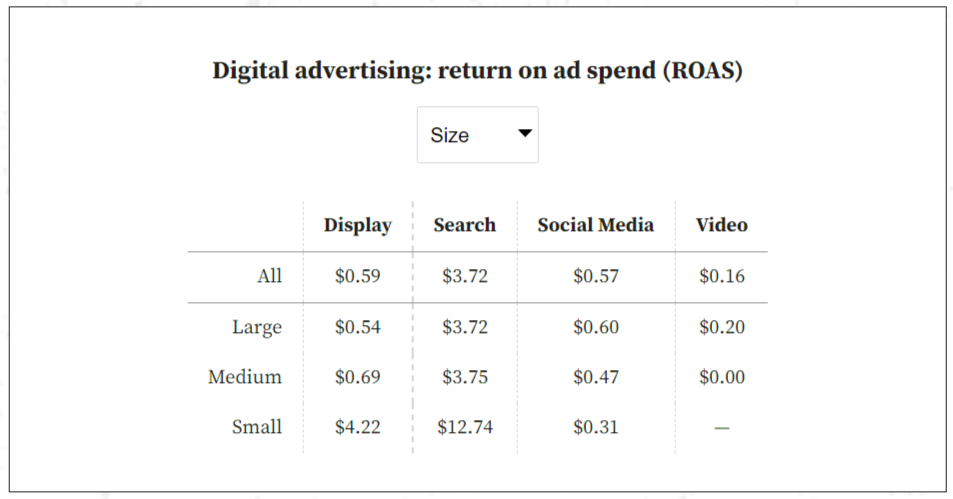How Nonprofits Really Use Digital Tools
Updated July 8, 2022
Nonprofits love to save money. Relying on low-cost digital communications tools like email and social media to get your message out is a great way to do that.
But of course your job doesn’t end when you post or hit send. Nonprofits also need people to read and respond to their communications – in great numbers. And research shows that’s getting harder for some nonprofits to achieve online.
I’ll tell you why in a moment, but first consider these statistics:
Email volume grows
The average subscriber could expect to receive 63 separate email messages from a single nonprofit in 2021. That’s more than once a week!
Do those emails motivate people to act? For fundraising-specific emails, the response rate was 0.08 percent. That’s on par with e-commerce sites that mail to their house files.
For every 1,000 fundraising emails sent, nonprofits raised $78. And note how that dollar amount is heavily skewed by the hunger-poverty sector.
Source: M+R Benchmarks 2021
Social media performance mixed
For every 1,000 email subscribers, nonprofits had 736 Facebook fans, 229 Twitter followers, and 141 Instagram followers, according to M+R Benchmarks. Facebook growth was essentially flat, but Twitter audiences grew by 5 percent and Instagram audiences by 25 percent.
At the same time, more nonprofits are learning that only a minority of their Facebook fans ever see their content. That is, unless they’re paying to boost their posts.
On average, just 4 percent of your Facebook fans see an unpromoted post. That’s because Facebook has been lowering the organic reach of brands for years in order to get you to buy advertising.
And does that investment of money and time drive donations?
Facebook is the social champ in fundraising, driving 1.1 percent of all online revenue in 2021. But it’s a lot of work to earn a buck there. The average Facebook Fundraiser generated 5 gifts, with an average gift level of $35.
Overall, nonprofits spend a dollar on social media advertising to earn 57 cents back.
Digital donations rise
Online donations made up 12 percent of all giving, excluding grants, in 2021. That’s an increase over 2020 and something to celebrate for nonprofits focused more on saving resources vs. growing them. Things are changing, even though most donors (even some millennials) still write checks.
Need some more good news? On average, 17 percent of the people who visit a nonprofit’s main donation page will end up making a gift. That’s another good reason to optimize the page and make it easy for people to find, whether that’s through social media, email or good old donor mail.
Perfecting your digital mix
So, how can you make the most of these digital tools? It starts with understanding what each tool is good at, and what they’re not. After all, you wouldn’t normally use your favorite black pumps as a hammer – but some nonprofits are doing just that with their digital tools.
Email is great for timely communications. Did your food bank run out of supplies again? Write an email to supporters with the subject line: “Why we closed early today.” Use it to show growing demand in your community for your services.
Or tell a moving story about a special pet in need that received care at your shelter this week. Make sure to include a photo, but don’t overdo it. As the number of images increases in an email, those all-important click throughs to your website go down.
Social media
Social media, especially Facebook, excels at grabbing people visually. Put up (and promote) a surprising statistic about your cause or show the human side of what you do in photos featuring volunteers and those you serve.
It’s also a great place to ask questions and post surveys. Social media by definition needs to be social. If your content isn’t provoking a two-way conversation, it’s time to put down the megaphone and rethink your content mix.
Social media is not a great place for detailed storytelling, since most content is viewed on mobile. So please stop posting fliers with tons of text or wordy appeals for donations.
Website
Finally, your website is home base. Social media and email help distribute your top stories. And if you’re doing it right, you match these stories with carefully segmented audiences that are ready to receive them.
But the real meat of your brand message must live on your website. And email and social have to bring people back to your site. There, potential supporters can get to know your organization, learn to trust you and take trackable actions like subscribing to your newsletter, volunteering, and donating.
This digital integration is the real key to saving your nonprofit money and time. But lately, I’ve been encountering a number of organizations that continue to keep their digital tools in silos.
When you use digital tools the right way in tandem with each other, it creates a multiplier effect. The value to your organization will be greater than the sum of the parts.
And if you integrate them further with traditional tools like donor mail and public relations, you see even more success.
Saving money is noble, but it’s not the end goal for most nonprofits. Integrate your communications tools and discover just how powerful they can be in helping you achieve your mission.





